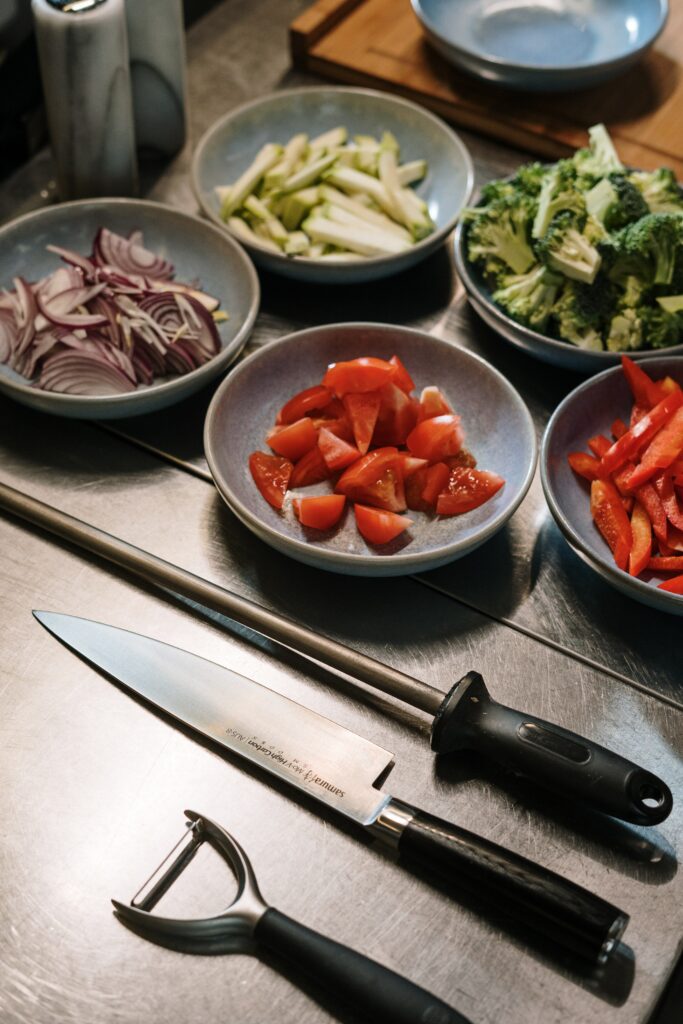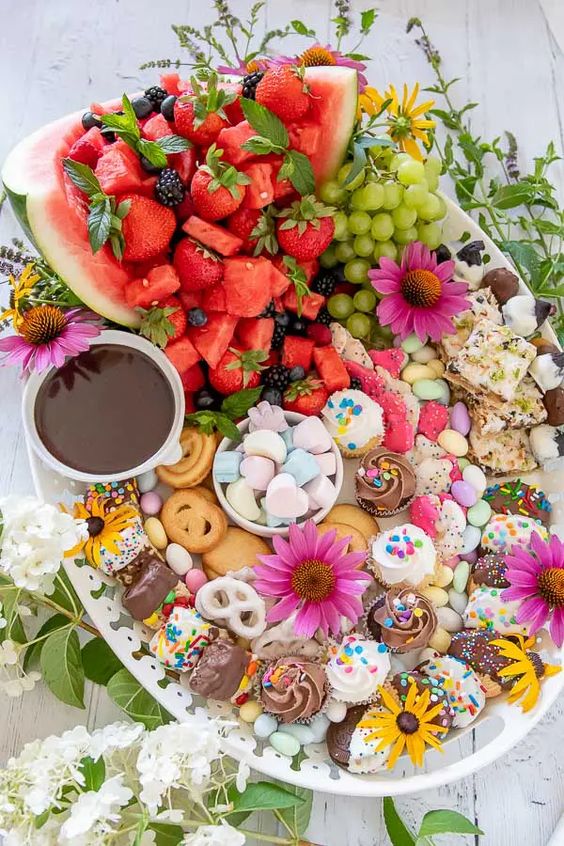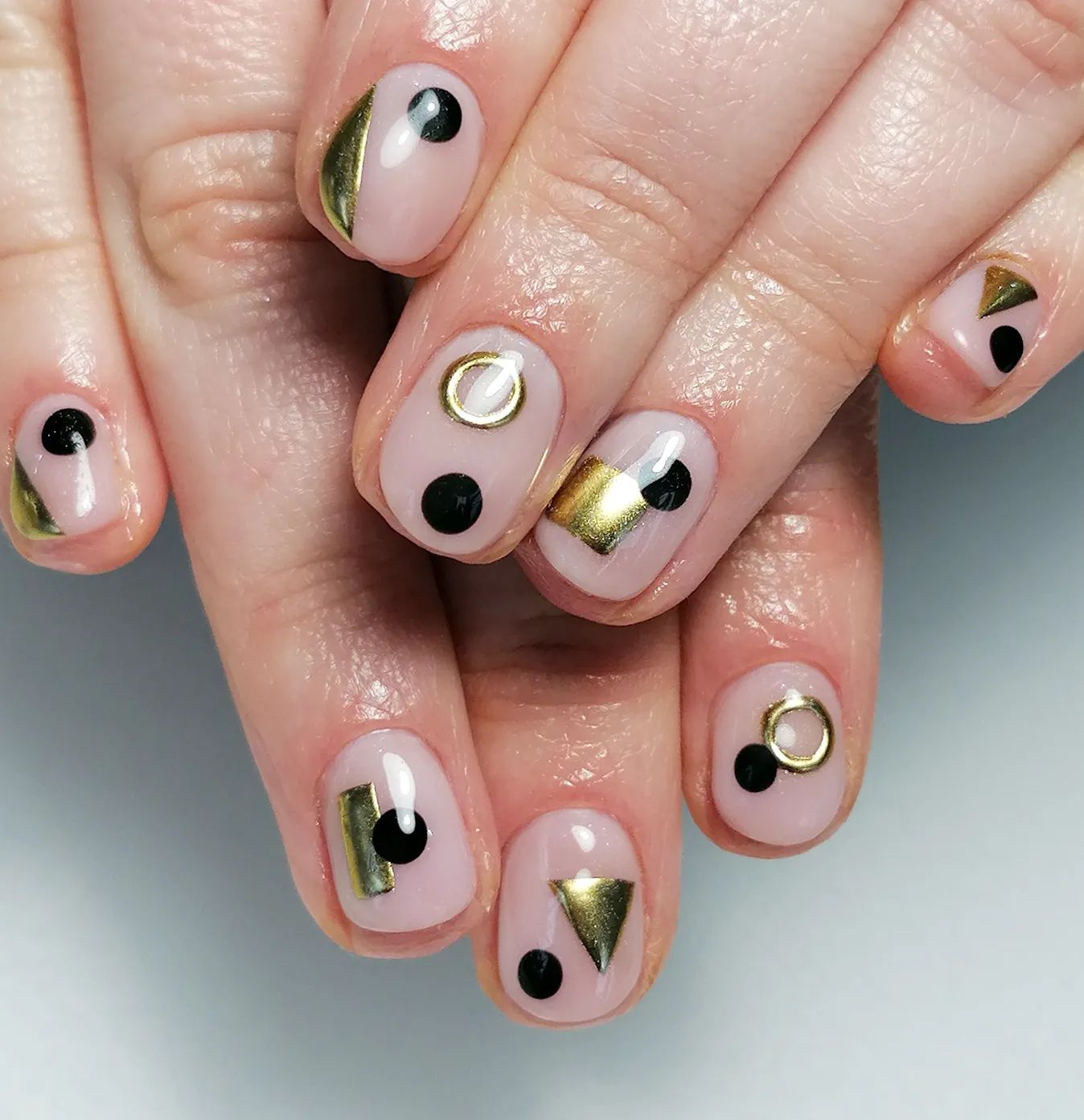A good kitchen knife is essential for any home cook or professional chef. A high-quality knife can make food preparation easier, more efficient, and more enjoyable.
However, with so many options available on the market, it can be overwhelming to choose the right knife for your needs. When shopping for a kitchen knife, it’s important to consider factors such as blade material, edge, shape, handle, tang, and maintenance.
In this article, we’ll explore each of these factors in detail and provide examples of high-quality knives that excel in each area. Let’s get started.

Blade Material
Blade Material: The foundation of a good kitchen knife. The quality and durability of the blade material can make all the difference in the knife’s performance and lifespan.
Common blade materials include stainless steel, carbon steel, ceramic, and laminated steel. Each material has its advantages and disadvantages.
For example, stainless steel is resistant to rust and corrosion, while carbon steel is easy to sharpen and maintains its edge well. Ceramic blades are extremely sharp and lightweight, while laminated steel combines the best of both worlds.
Blade edge
The edge of a kitchen knife can drastically affect its performance and versatility. A straight, double bevel edge is the most common and versatile, suitable for a wide range of tasks. However, single-bevel knives are preferred for certain specialized tasks, such as slicing sashimi or making sushi.
A single bevel knife has a sharpened edge on only one side, allowing for a more precise cut. You will need to compare a single bevel vs double bevel knife to come up with the right choice for your kitchen.
Ensure you understand the differences between single and double bevel knives, their advantages and disadvantages, and which tasks each type of knife is best suited for. This will help you in selecting the best knife for your use.
Blade Shape
Kitchen knives come in a variety of shapes, each designed for specific tasks. For example, a chef’s knife has a broad blade and curved edge, making it suitable for chopping and slicing vegetables and meat.
A santoku knife has a straighter edge and shorter blade, making it ideal for precision tasks like mincing and dicing.
A bread knife has a serrated edge, perfect for cutting through crusty bread without crushing the soft interior. We’ll explore the most common blade shapes and their best uses, helping you choose the right knife for your cooking style and preferences.
Handle
The handle of a kitchen knife is a crucial element to consider when selecting a good kitchen knife. The handle should be comfortable to grip and provide a secure and stable grip, even when the blade is wet or greasy.
A good handle should also be durable and able to withstand wear and tear. Handles can be made from various materials, such as wood, plastic, or metal, and each material has its advantages and disadvantages.
A wooden handle may provide a traditional look and feel but can be prone to cracking, while a plastic handle may be more durable but can feel less comfortable in the hand.
Ultimately, the handle should feel comfortable and secure in your grip and be made from a durable and easy-to-maintain material.
Weight
The weight of a kitchen knife is another essential factor to consider when looking for a good quality knife. A well-balanced knife with a weight that feels comfortable in your hand can make all the difference in terms of performance and precision.
A knife that is too heavy can be challenging to control and cause fatigue over extended use, while a knife that is too light may not provide enough cutting power or control.
The weight of a knife is often determined by the blade’s size and the materials used in the handle. When selecting a knife, it is crucial to find a weight that feels balanced and comfortable for your specific cutting needs.
Size
The size of a kitchen knife is an important consideration when selecting a good quality knife. The size of the knife you choose will depend on the specific tasks you plan to use it for.
A large knife with a long blade, such as a chef’s knife, can be versatile and suitable for a wide range of cutting tasks, including slicing, chopping, and dicing.
However, a smaller knife, such as a paring knife, can be better suited for more delicate tasks like peeling, trimming, and carving.
When selecting a knife, consider the size and shape of the blade, as well as the overall length of the knife, to ensure it is suitable for your specific needs.
In conclusion, selecting a good kitchen knife is essential for any home cook or professional chef. When choosing a knife, it is important to consider several factors, including the blade’s material, sharpness, handle, weight, size, and balance.
A high-quality knife can make your kitchen tasks easier, safer, and more efficient. However, it is also crucial to maintain and care for your knife properly to ensure its longevity and performance.






